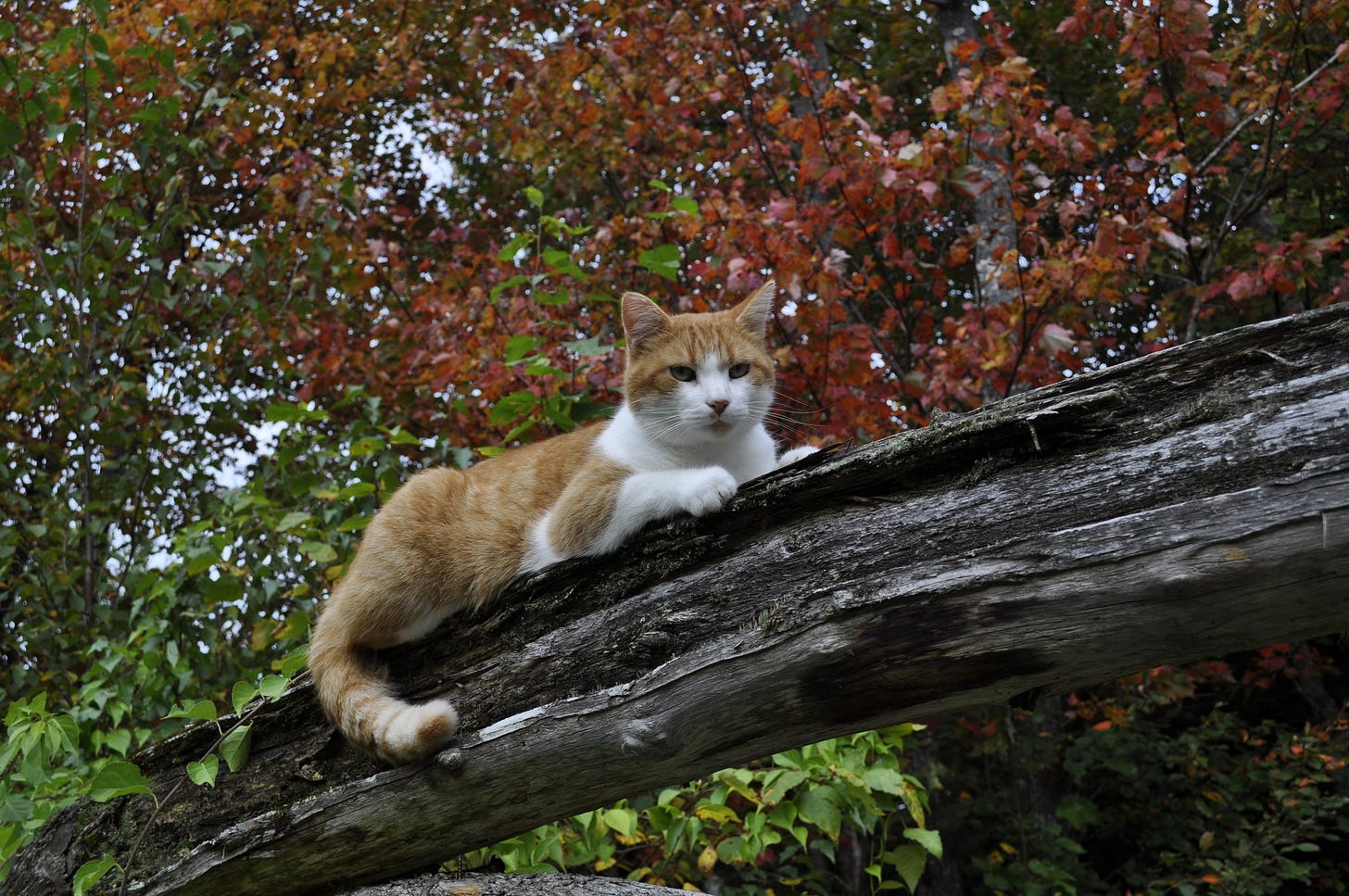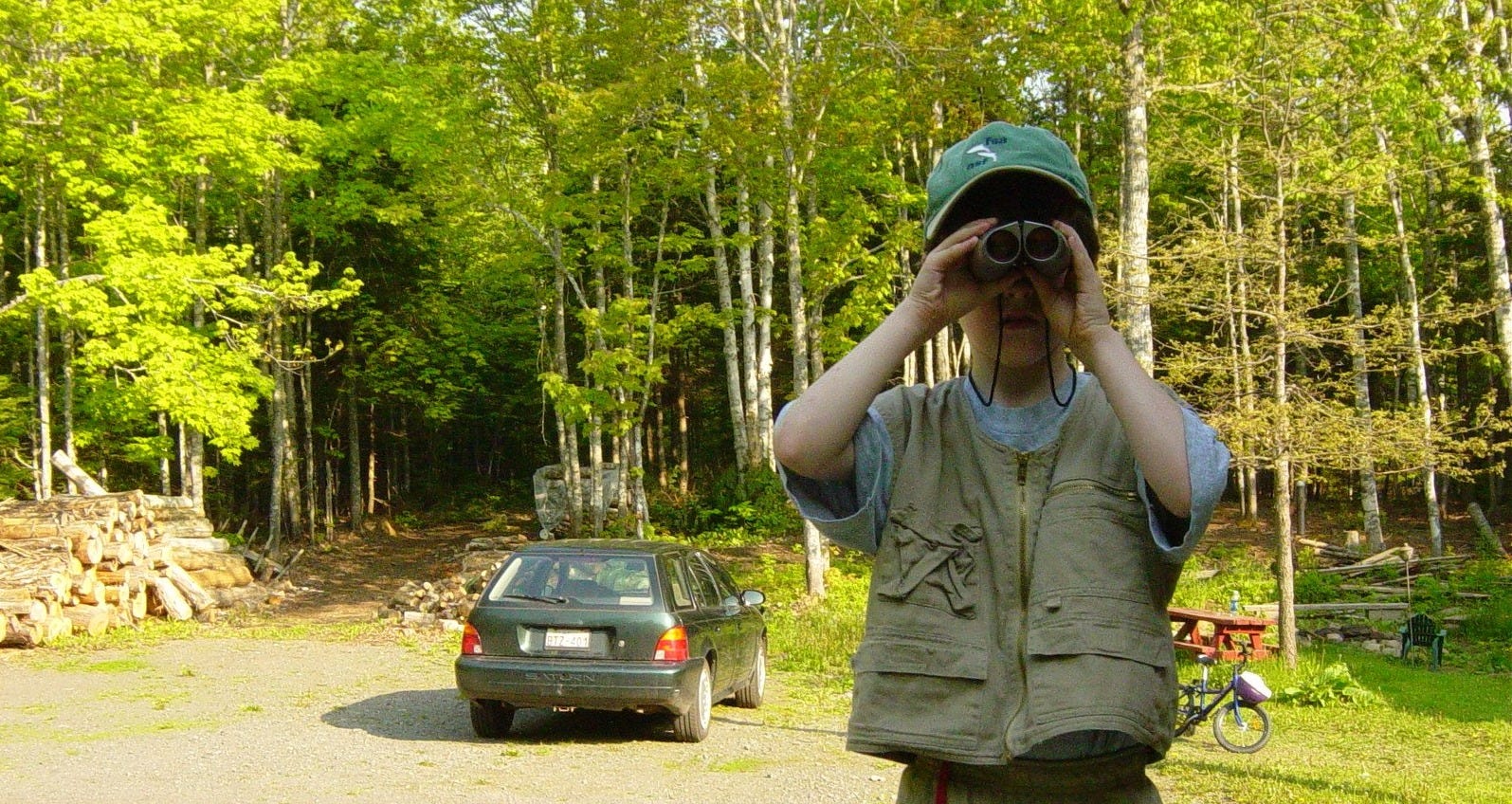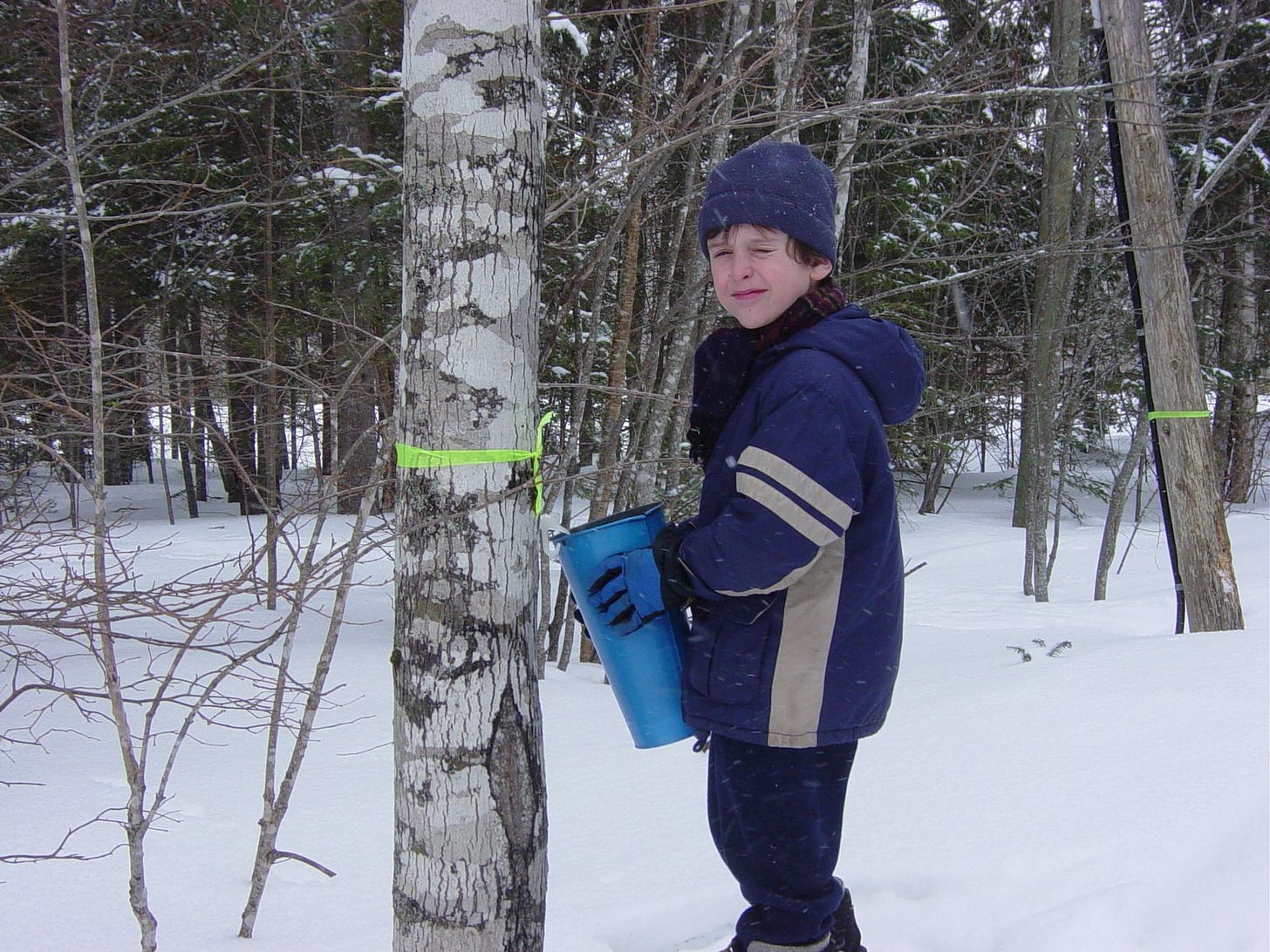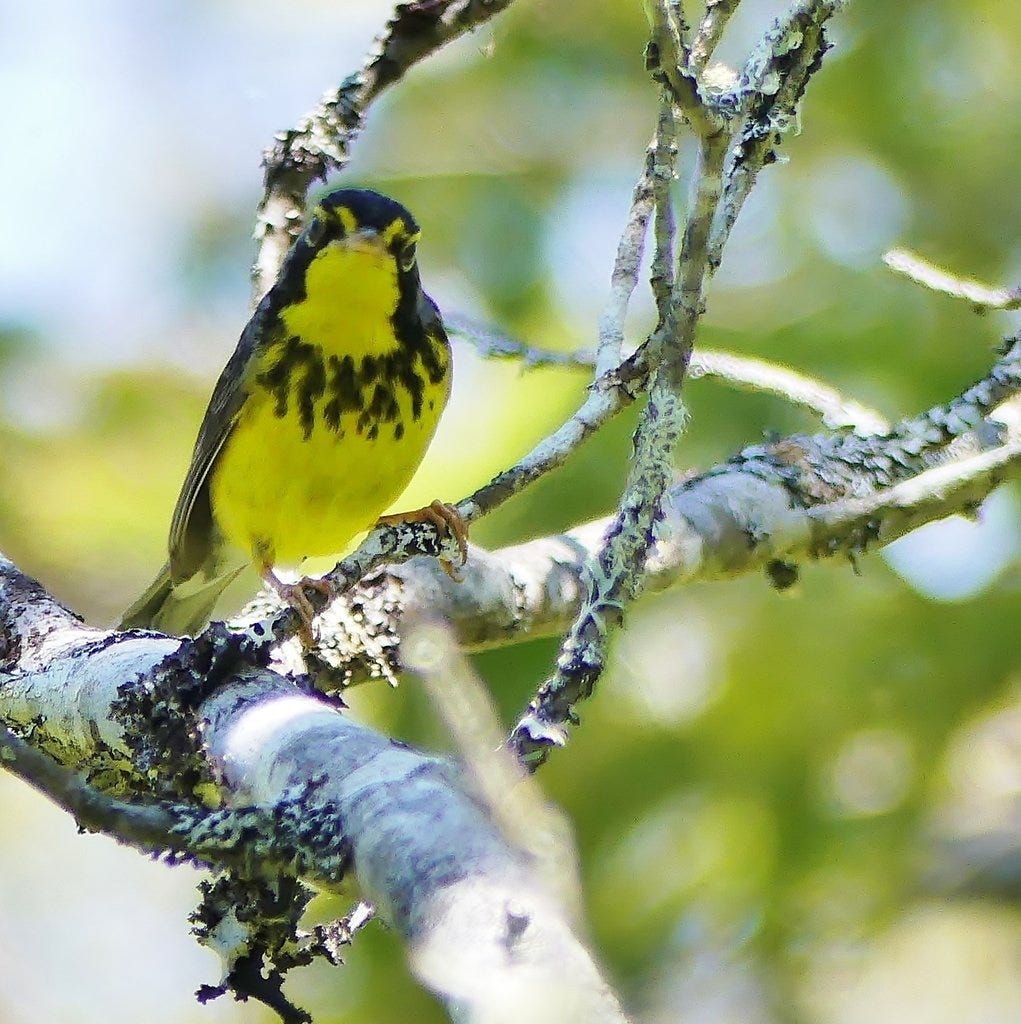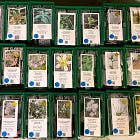The dirt-mound archipelago: an ode to life in the countryside
A few anecdotes from my youth in the woods
Imagine... Until my twenties, I didn't realize that growing up, the islands on the lake at my parents' house were nothing more than mounds of earth left there by the truck that had dug up the pond. But that was just one of the realizations that made me laugh at my own carefree youth. Both born in rural areas, my parents dreamed of leaving the city when I was a kid. This is an ode to my life in the country, and a plea to keep our children close to nature.
This article was first published in Projet Amelanchier (amelan.ca), my first blog, in 2023.
A dream come true
My parents wanted to buy land in the country, after selling their suburban home. For me, the reduced access to city amenities was more than compensated by access to cedars, a creek, marshes, maples and a few tall pines in the backyard. Ah, the days when buying a lot wasn't out of the question!
In these forests, three generations of kitties have accompanied me everywhere. I was an only child, so company was appreciated. Even though I frequently received tiny corpses as gifts, it took me several years to realize that the felines I loved so much were cleaning the woods of birdsong, but that's a story for another time.
The house itself was a fixer-upper, so during the renovations I used to go to the lake on the islands a few hundred yards behind. So many memories!
The lake with many names
The lake was about forty metres long and roughly round-shaped.
Let's also call it the beaver pond, because there were beavers. But when most Kent County lots are divided into rows a few acres thick, these saw-toothed mammals can quickly create a dam that floods the entire width. Not very popular with humans, who want access to the forest behind! But we love beavers here, so we'll keep quiet about their ultimate fate.
What mattered, or mattered to me, were the islands in the pond. To me, they were a world unto themselves. I placed scrap wood planks on them to get from one island to the next. Here's a map from my own memory showing these islands circa 2006.
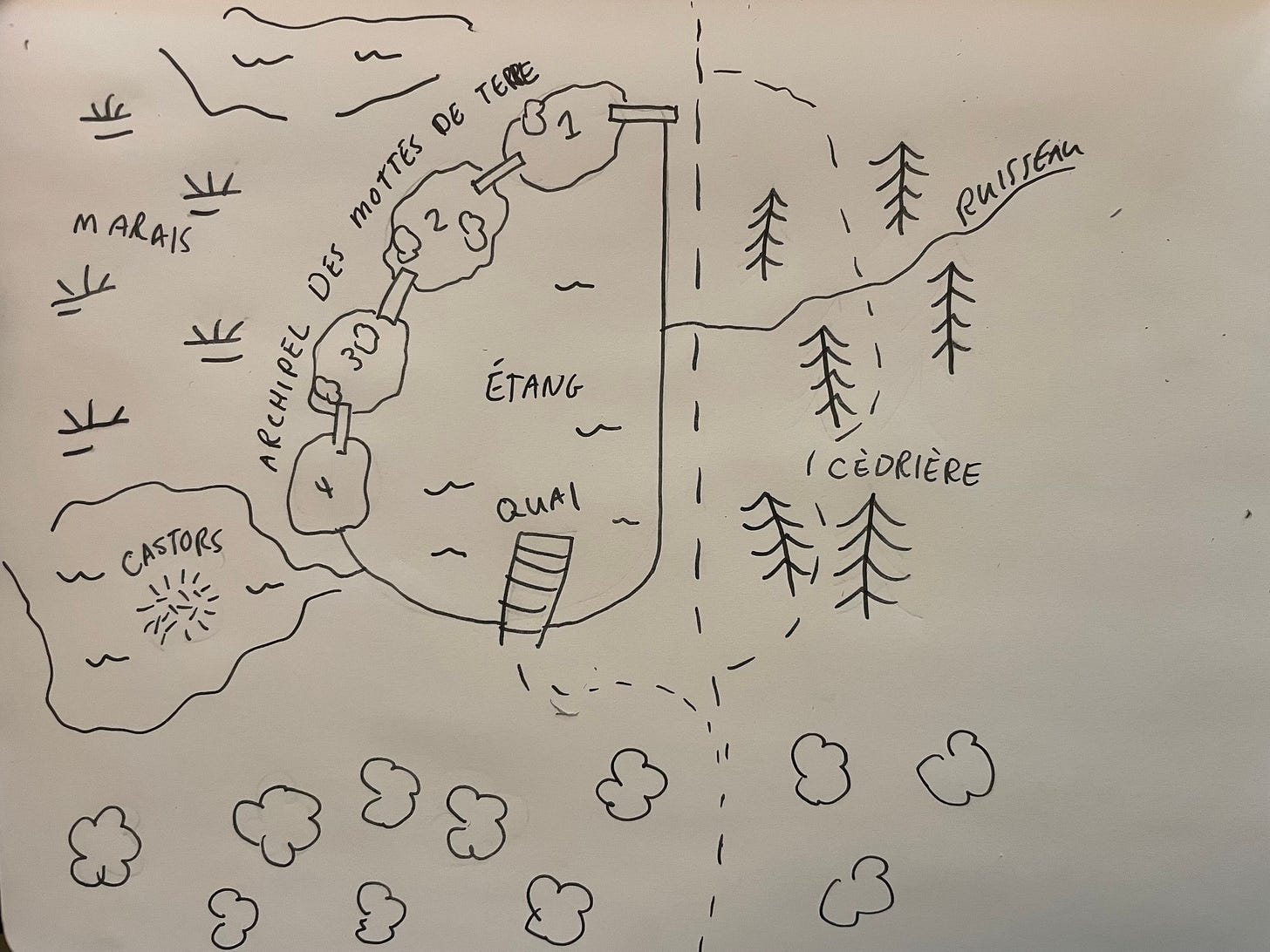
The individual islands had many names over the years, but Birch Island (2) was by far the coolest. White birch trees covered this islet, and I had thinned out a circle (with my father's help) in the middle so I could set up my fortress, never built though.
We even skated a few winters on the lake, and the next island (3) was a place where we could sit down for a snack break.
The animals I knew by name
I didn't know the names of the plants back then, but I loved imagining the lives of the animals in the woods behind our house.
We saw moose in our yard. Hares were frequent visitors. My parents even heard some kind of lynx one night. And were there any bears? I think there were. On the other hand, I was scared to death of owls at night.
I've always had a fascination with animals, mammals in particular, but also crawling insects and frogs. But my passion for birds and pollinators came much later.
Reflections of a twenty-something
Since then, we've sold the house and moved back to the city. It was only later that I realized that those islands were nothing more than mounds of dirt left there by the previous owner's machinery, which had dug the pond. In my twenties, we revisited the house and I quickly realized that everything looked much bigger back then than it does, from my perspective as a grown-up man today.
But I also realize that what fascinated me most were the lifeforms that made up the forest in which I grew up. The beavers, the chickens in their coop, the cedars in the cedar grove, the maple trees we sometimes tapped with a hand-drill - these were all part of my childhood imagination that led to who I am today.
Don't hesitate to tell your child to go outside and play, while checking daily for ticks. Perhaps the plant you choose to incorporate into your yard, if you choose the right one, will attract beneficial insects and birds that you can observe together. Who knows? To help you decide, trees that are essential for wildlife, such as native birches, oaks, willows and maples, attract the most insect species, real nature machines that will in turn feed the birds whose babies need caterpillars to grow.
Ah, and for us cat lovers, some of our rarest birds nest on the ground, constituting easy prey for domestic felines. Sorry, Granola, but your life has been too good, at the expense of young warblers. I'd say the number one option would have been the good old leash if it absolutely must go outside.
This bird, considered vulnerable by the Canadian government (Species at Risk Act), winters in South America but comes up to Canada to breed in summer. Its nesting season is from early June to mid-August, and it nests on the ground, making it vulnerable to all kinds of predators. Its population in Canada has declined by around 80% since the 1980s.
And if you live in the city, create a garden of native and edible plants. What better way to commune with nature than to create a part of it yourself! Your children will thank you.
Here are a few ways you can get involved!
Native plant resources
Become a Butterflyway Ranger
Participate in a Wildflower Seed Library




